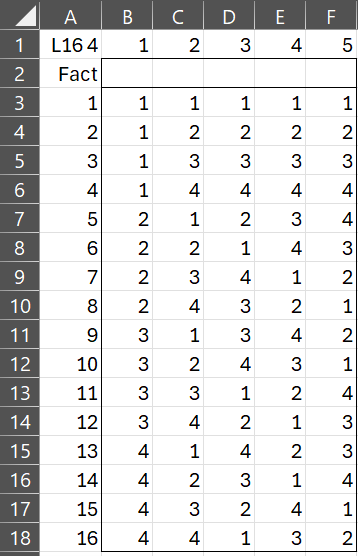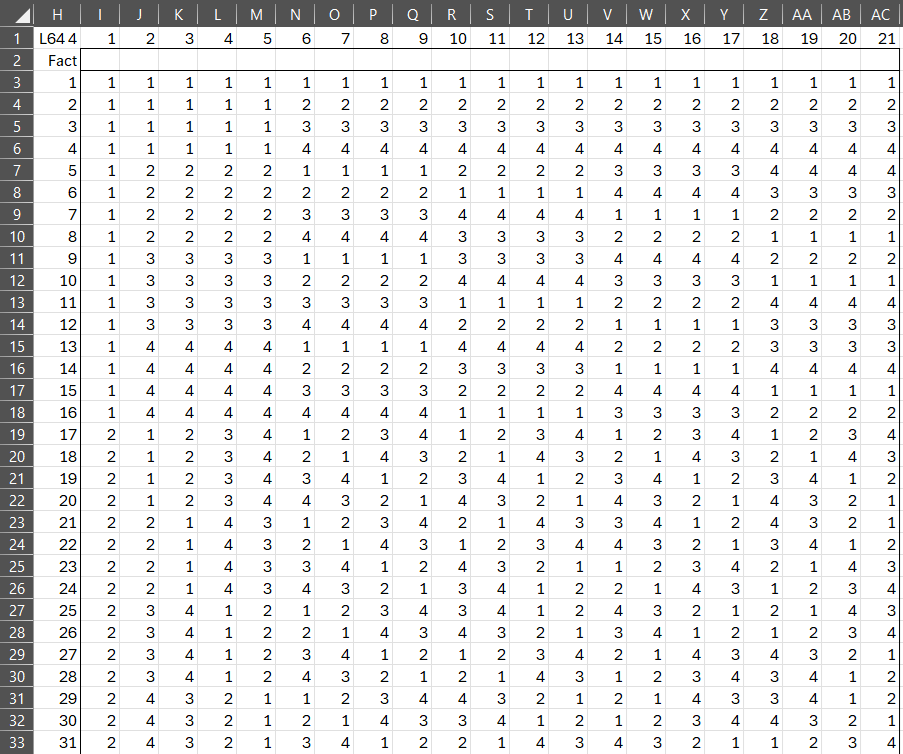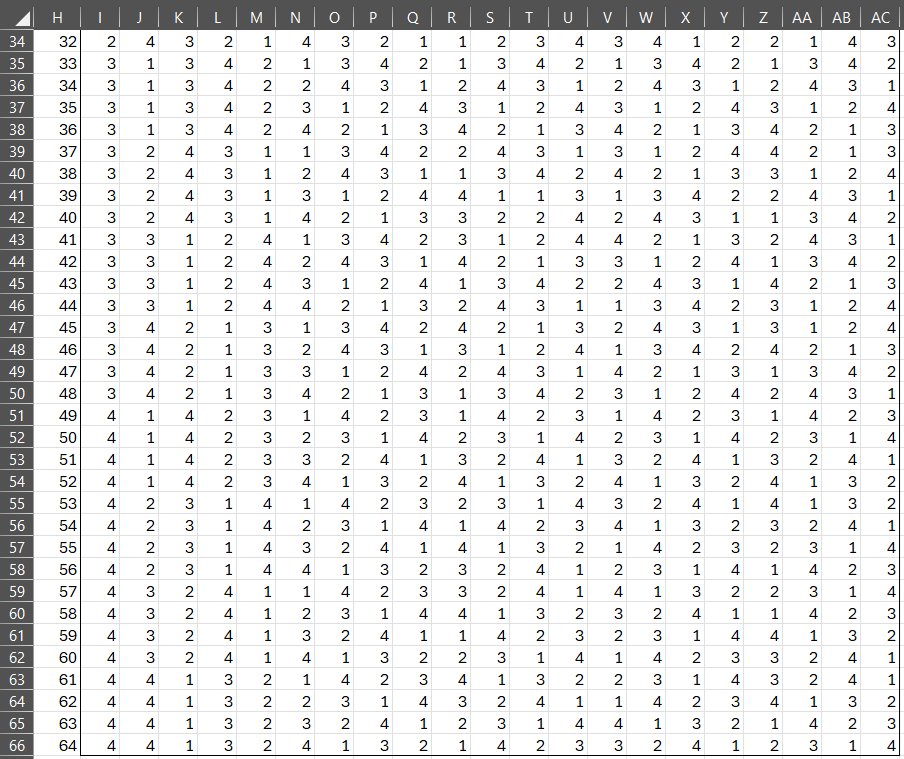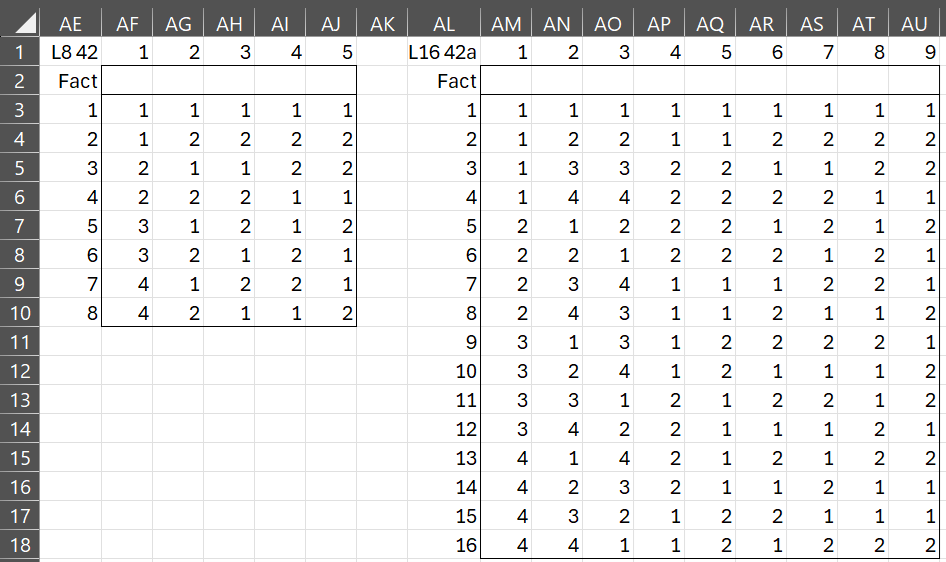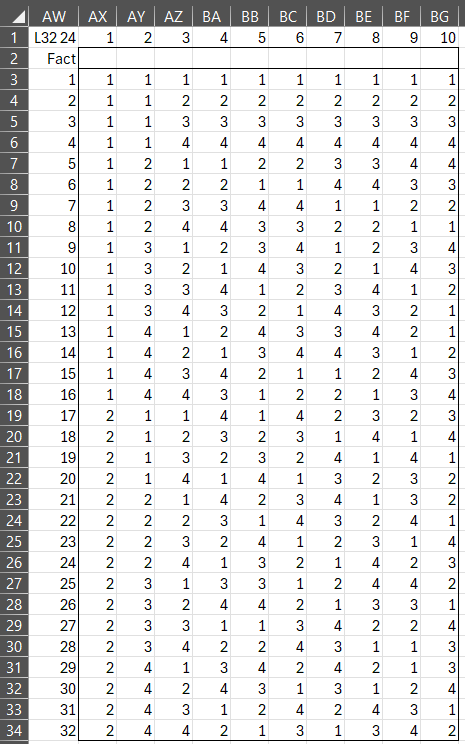4-level Taguchi design summary
We now consider the following fractional Taguchi 4^k designs. These designs are limited to four levels, which are labelled 1, 2, 3 and 4.
Figure 1 – Four-level designs
The first two of these designs only use 4-level factors. These support interactions as described in 4-level Design Interactions.
The remaining four designs allow a combination of 2-level and 4-level factors without interactions of the 4-level factors. The L8 design uses the first column for a 4-level factor and the remaining columns for 2-level factors. On the other hand, the L32 24 design uses the first column for a 2-level factor and the rest for 4-level factors. Finally, the L16 42a design uses the first 3 columns for 3-level factors and the remaining 6 columns for 2-level factors.
While L16 42a doesn’t accept interactions of the 4-level factors, they do accept interactions of the 2-level factors, as explained in 4-level Design Interactions.
List of 4-level designs
The L16 4 design is shown in Figure 2.
Figure 2 – L16 4 design
We show a L64 4 design in Figure 3.
Figure 3 – L64 4 design
Next, Figure 4 displays the L8 42 and L16 42a designs.
Figure 4 – L8 42 and L16 42a designs
The L32 24 design is shown in Figure 5.
Figure 5 – L32 24 design
Interactions
Click here for information about the interaction of 4-level factors. We also include an example of such a design.
Examples Workbook
Click here to download the Excel workbook with the examples described on this webpage.
References
Roy, R. K. (2010) A primer on Taguchi method. 2nd ed. Society of Manufacturing Engineers
https://www.scribd.com/document/381615601/288020391-a-Primer-on-the-Taguchi-Method
University of York (2004) Orthogonal arrays (Taguchi designs)
No longer available online
Minitab (2024) Catalogue of Taguchi designs
https://support.minitab.com/en-us/minitab/help-and-how-to/statistical-modeling/doe/supporting-topics/taguchi-designs/catalogue-of-taguchi-designs/

